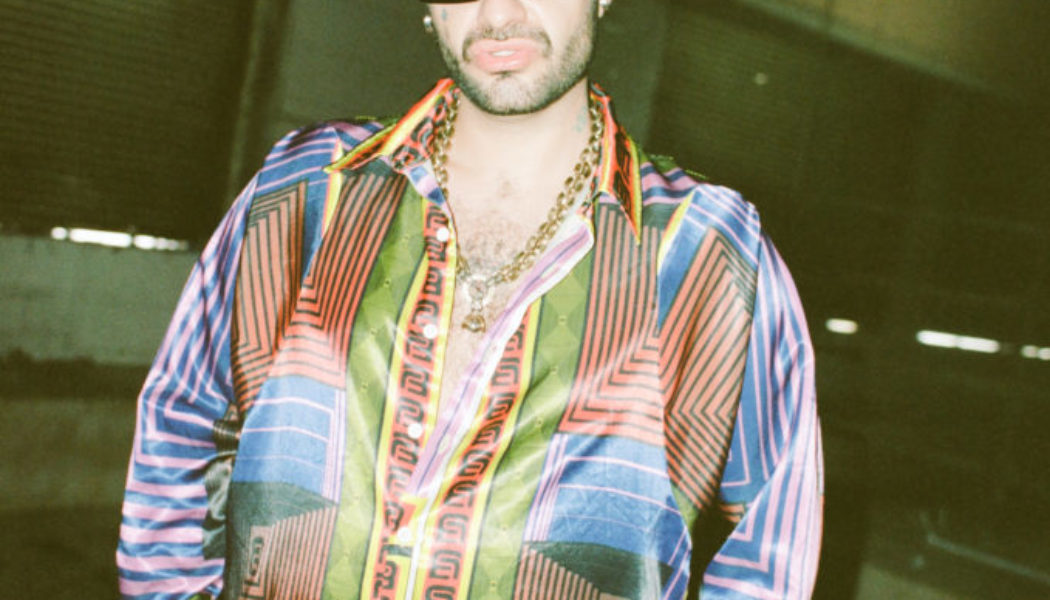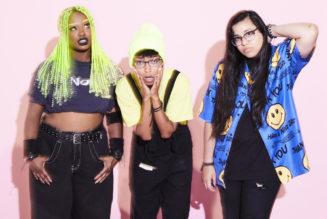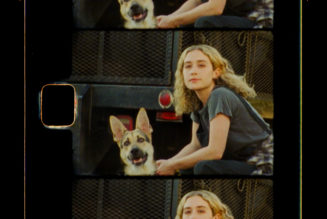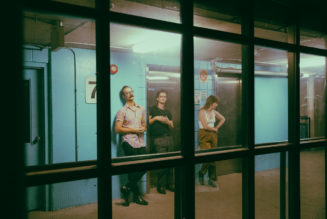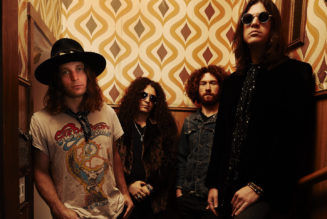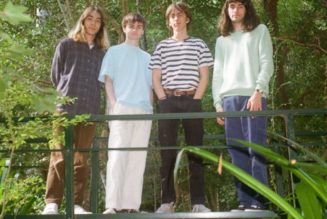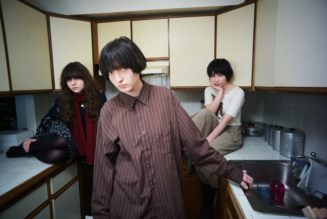Blue Rojo and his sad boy album are pushing boundaries in Latin pop music. The Mexican-American singer reckons with an unrequited queer romance in his debut album, Solitario, that was released on November 17. Blue Rojo dances with the darker side of the genre through elements of emo, punk, reggaetón, trap, and trance music.
“I was so in love with this straight man who was not giving me anything,” he tells SPIN over Zoom from a Mexico City coffee shop. “It was kind of toxic and dramatic, but the Blue Rojo influence is there to make it into a spiritual journey to overcome the heartbreak.”
While new artists align with major labels in hopes of getting to the point of releasing an album, Blue Rojo released Solitario just two months after signing with Universal Music Group. It was his moody LP that caught the attention of the label.
“It was good to get signed like this, because I didn’t feel the pressure of getting signed and then having to do this and that,” he says. “It worked out more organically.”
[embedded content][embedded content]
Blue Rojo was born Santiago Ogarrio in San Diego — neighboring where he grew up in Tijuana, Mexico. Living life near the border, his musical influences ranged from Britney Spears, Avril Lavigne and Evanescence to Mexican pop acts like Kabah, Belinda and Belanova. In 2013, he received his first big break as a finalist on a Mexican variation of The Voice, La Voz México. However, he was putting on a clean-cut, “guy with a guitar” image that wasn’t him. To be more palatable to Mexican audiences who were not so keen on queer artists, he downplayed his sexuality.
“I was super depressed after La Voz,” Ogarrio says. “I just wanted to go crazy, so I left the city. Even if it sounds cliché, I needed to find that meaning of my music and myself. Going [to La Voz] was like a good thing for me. It moved me.”
After busking for a handful of years in cities like Guadalajara, Tijuana, L.A. and New York City, Ogarrio found himself and his artistic identity of Blue Rojo in these more liberal areas. Much like his ‘90s and 2000s aesthetic, the name was inspired by the Eiffel 65 song, “Blue (Da Ba Dee).”
“I thought [the lyrics were], ‘I’m blue and I’m in need of a guy,’” he recalls. “I took that name and I wanted to mix in something Spanish: Rojo.”
[embedded content][embedded content]
Following his travels, Blue Rojo returned to Mexico City and started to release music independently in 2018. He re-emerged with a face tattoo of rainbow-colored tears and openly embraced being gay in tracks like “Niñaboy” and “Soy Tu Payaso Papi” that pushed back on the machismo, or toxic masculinity, that’s rooted in Latino culture.
“I was just myself,” Ogarrio says. “I just needed to express myself. There were people that felt like what I was doing wasn’t right. That it was too much. I’m very thankful that I went there and I didn’t care what anyone was thinking.”
After seeing Blue Rojo’s fierce and flamboyant music videos on YouTube, Olympia de la Macorra and Diego Urdaneta encouraged him to record an album on their label, Void Records. A year ago, Ogarrio started producing Solitario with Urdaneta, Venezuelan singer-songwriter Ulises Hadjis, and Dominican producer Diego Raposo. That motley crew of musicians from the worlds of Latin rock, pop, and the Caribbean assembled to bring his vision to life. In August, upon hearing the completed album, Universal Music México signed him.
“It was super enriching putting in [my album] all my influences,” Ogarrio says. “Even if I love pop and I consider myself a pop queen by nature, I cannot limit myself to that. It was about being open, and that’s how the album came out. Even if it’s like different genres in the songs, it feels very well-rounded.”
[embedded content][embedded content]
On Solitario, Blue Rojo grappled with having a crush on a straight man who doesn’t feel the same way. The LP’s title translates to “Lonely,” which reflects the inner turmoil that he faced from the one-sided romance. His heartache pierces through the surging electronica of lead single “Después De La Pandemia Volví A Ser Católiko,” where he cries out to Biblical figures.
“I was hitting rock bottom during the pandemic, going back to when I was like 7-years-old and praying to God or the Virgin the Mary,” he recalls.
In the industrial “El Amarre,” Blue Rojo evokes the devil in trying to break what feels like a curse his crush has put on him. Later, in the reggaeton-infused “Eslabón De Bombón,” he fully descends into darkness and turns up the heat while reclaiming a Spanish homophobic slur.
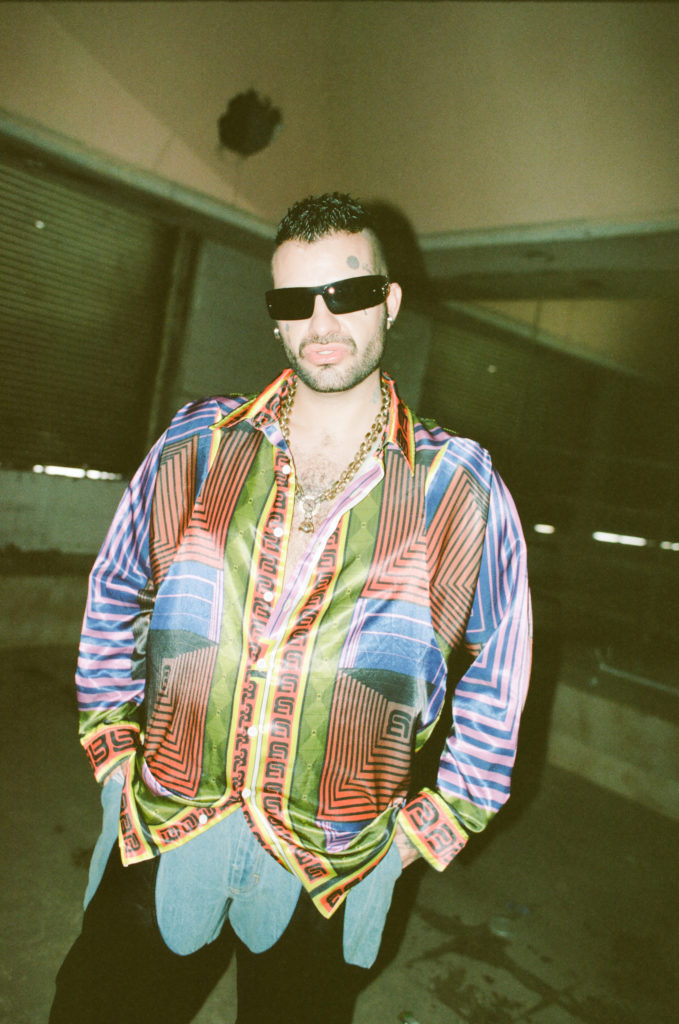
“It’s like embracing the word puto,” he says. “That I’m this puto and I don’t care, and I’m so hot. I’m like this lava boy. It’s embracing that and letting myself go there.”
There are lighter moments like “BFF,” where Blue Rojo namechecks Britney while longing for his high school days. In the synth-pop anthem “No Te Kiero Olvidar,” he starts to muster up the strength to move on in between relatable relapses. He calls the album a “mythical quest” in overcoming the toxicity.
“I would love for people to have fun and enjoy [the album],” Ogarrio says. “Also to cry and feel empowered. To go to these sensitive and vulnerable places. Go inside this world of Blue Rojo that’s cool, crazy, and also deep and real.”
